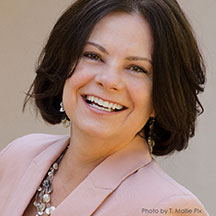Agile Product Owner Defined

Editor’s note: This article is penned by Agile management instructor Rosemary Hossenlopp. As a certified Project Management Professional (PMP®) with more than 10 years of experience managing projects for Apple Computer, Cisco, VMWare and others, Rosemary knows the process organizations take to transform how they create new products using Agile. Here’s why you need to know about these topics!
Why Are You Introducing This Class?

For the first time this spring, we are offering Agile Product Ownership as a new required course for the Specialization in Agile Management and an elective in the Professional Sequence in Agile Management. Students should take this course after completing Agile Management: Principles and Practices.
Why Does This Class Matter?
An Agile Product Owner is a key role in today’s world. What once was solely in the domain of software development, this position is now an integral part of many businesses and functions across enterprises.
You’ll learn how Agile product ownership applies to the development of different products and services in a variety of industries and organizations. You’ll also learn how to implement these practices using Scrum, Kanban, Lean and other appropriate Agile frameworks.
Product Owners no longer only work with development teams; they work with teams that have expertise relevant to the problem being solved.
So What Do Product Owners Do?
They help drive profitability to an organization, define improvements in service to your community, or increase public opinion and support of your service. It is a key team role that is responsible for creating and championing a vision that identifies which solutions or products will bring competitive success to an organization.
A Product Owner is responsible for maximizing the value of the product. Value is defined as the financial benefit that an organization receives after investing money in projects or initiatives. This can apply to:
- Commercial organizations that want a Product Owner to increase revenue and competitive market share
- Nonprofits that want their internal teams to more effectively improve quality of life for others at a community, local, state, national or even global level
- Public-sector leaders who are championing changes in mission effectiveness
Product Owners no longer only work with development teams; they work with teams that have expertise relevant to the problem being solved.
Titles Don’t Matter
Many people ask, “What is a Product Owner as opposed to a product manager?”
Here’s the answer:
- Each role focuses on understanding the customer journey for a specific solution that is important to the organization’s brand. A customer journey maps all of the experiences that customers go through when interacting with a product or solution.
- Both a Product Owner and a Product Manager know the entire value chain of processes. A value chain documents touchpoints for process, people and product, as well as policy constraints that add value. These roles ensure that the value chain is optimized to deliver on the brand-value proposition: the promise to the customer of why that customer should purchase a product or service.
- Many organizations don’t neatly fit the Agile mold but have leaders who actively lead teams to create products or services that help their organization’s brand. They can also function in the role of Product Owners.
Anyone who is responsible for driving any of the above deliverables is—in Agile terminology—a Product Owner. This isn’t just a software role.
Inside the Product Owner Job Description
The Agile Product Owner is accountable for prioritizing what work should be done. In doing so, he or she generally leads the following activities:
External to the project team
- Optimizing the value of the project work
- Understanding shifting customer needs
- Driving customer journey mapping, value chain and value proposition
Internal to the project team
- Documenting product-backlog items
- Prioritizing the items in that backlog to best achieve goals and missions
- Communicating key priorities
- Ensuring the project team understands items in the backlog
Is this easy? No. It’s a big puzzle.
Interested in learning how to operate in this role? Check out our Agile Product Ownership course.
Rosemary Hossenlopp is a Silicon Valley–based Project Management Professional® focusing on high-growth industries undergoing business model changes. Her book Unearthing Business Requirements: Elicitation Tools and Techniques is recommended reading for both the International Institute of Business Analysis™ and the Project Management Institute® requirements exams. Her book Organizational Project Management: Linking Strategy and Projects was the first book to describe using outcomes to improve organizational results. She is also an avid traveler, reader and scuba diver.